Cute Baby Animals in the Wild That Are Very Very Very Very Very Very

Outset
Photograph: SJ Travel Photograph and Video/Shutterstock
"Awwwwwww!"
If you're reading this, you probably beloved to travel. And if yous're a rational human being with the ability to see, you definitely beloved cute baby animals. You know, the ones whose faces are and so endearing you just want to squish them? But you are also a smart, responsible tourist who maintains a prophylactic altitude, and are also aware that some of them (or their protective mamas) might bite your hand off?
Ah, the dilemmas of an adoring traveler.
There are few travel experiences every bit rewarding as those that involve wildlife, and seeing a mother interact with her babies in the wild is definitely 1 of those moments that tin make time stand still. We humans are but a sliver of the living beings on this planet, and we are blessed with many opportunities to view animals in their natural habitat—so it is our responsibility to ensure we are doing so with care, respect, and responsibility as we admire Mother Nature's incredible inhabitants.
And so become your bucket list ready and prepare to "aww" your way through this article because we accept got some oh-and then-pinchable cheeks coming your way (but don't actually pinch them, remember? Delight try to keep up, people).
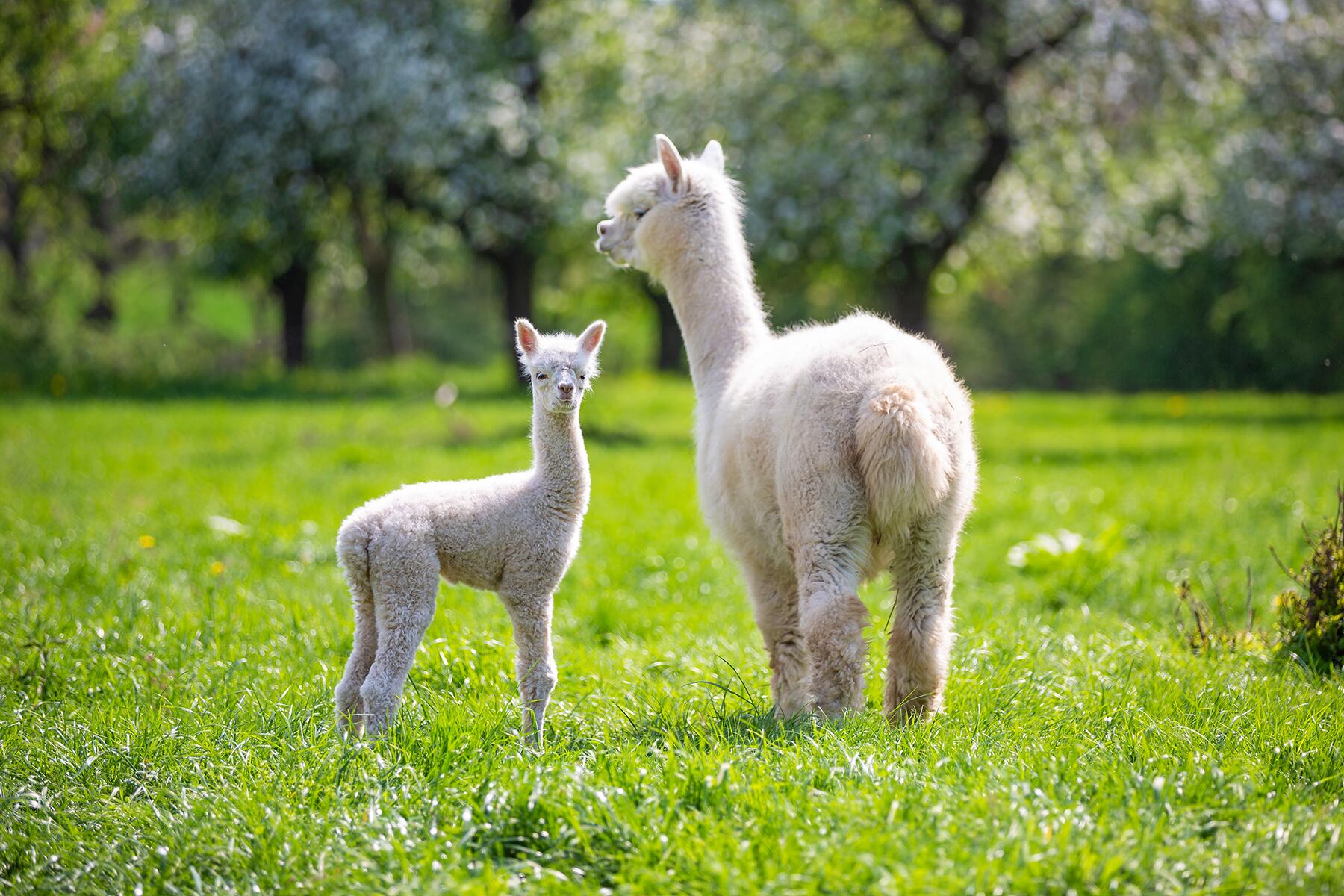
PHOTO: fotorince/Shutterstock
1 OF 12
Alpacas
In that location is no animal that screams "cuddle me" more than a babe alpaca. Admittedly none.
Their fluffy wool, squinty optics, snuffly noses, and perpetually smiling mouths brand them a x out of ten on the cute calibration. Living in the wild in the Andean mountains, alpacas are as well raised domestically for their meat or wool and their docile nature makes them approachable as a photo attraction. You can detect them adorned in vibrantly colored decor like their cholita owners in the tourist hubs of Peru or Republic of bolivia, where tourists can even get up close for a respectful pet, cuddle, or selfie if they wish.
If a close meet is what yous seek, ensure that your tourism dollars are going towards the fair treatment of these animals by doing your research and asking trusted locals earlier budgeted them.

Photo: LMspencer/Shutterstock
2 OF 12
Mountain Gorillas
Mountain gorillas are some of the most powerful creatures in the globe, clocking in at up to 15 times as stiff as humans, so it'due south natural to feel a little apprehensive when in their presence of the mountains of Rwanda, Uganda, or the Autonomous Democracy of Congo. But seeing their fiddling toddlers tumble virtually the jungle, jumping upward for a piggyback, swinging from the trees, and plucking leaves off branches, is ane of the about awe-inducing shows that Africa hosts.
Many describe gorilla trekking as a life-changing feel, and a big office of this is due to their resemblance to the states human being beings—we share 98% of the same DNA. Looking into the eyes of a gorilla youngster is similar looking at a toddler of our ain species, except hairier, more than leathery, and smellier (in virtually cases).
INSIDER TIP When trekking, wearable high boots and long pants, and bring plenty of water—the way to the gorillas is through thick bush and your hike duration depends on where the gorillas are at the time, which can exist quite lengthy.

Photo: Simon Dannhauer/Shutterstock
3 OF 12
Ocean Turtles
Newly hatched turtles waddling out to their new life at bounding main will pull on your heartstrings for reasons well beyond their cuteness (although how adorable are those scurrying petty legs?). It is estimated that only one in a 1,000 turtles render to the same beach to lay eggs, with the rest falling victim to pollution, fishing, predators, currents, and other obstacles, so you will find yourself rooting for the piffling guys as they bravely scramble out against the odds.
In that location are organized releases of baby sea turtles across beaches such as Guatemala'southward El Paredon, Turtle Island off Borneo, and Sayulita in Mexico, then do your research to observe a credible conservation heart, spectate from a rubber distance, and soak in the cuteness!
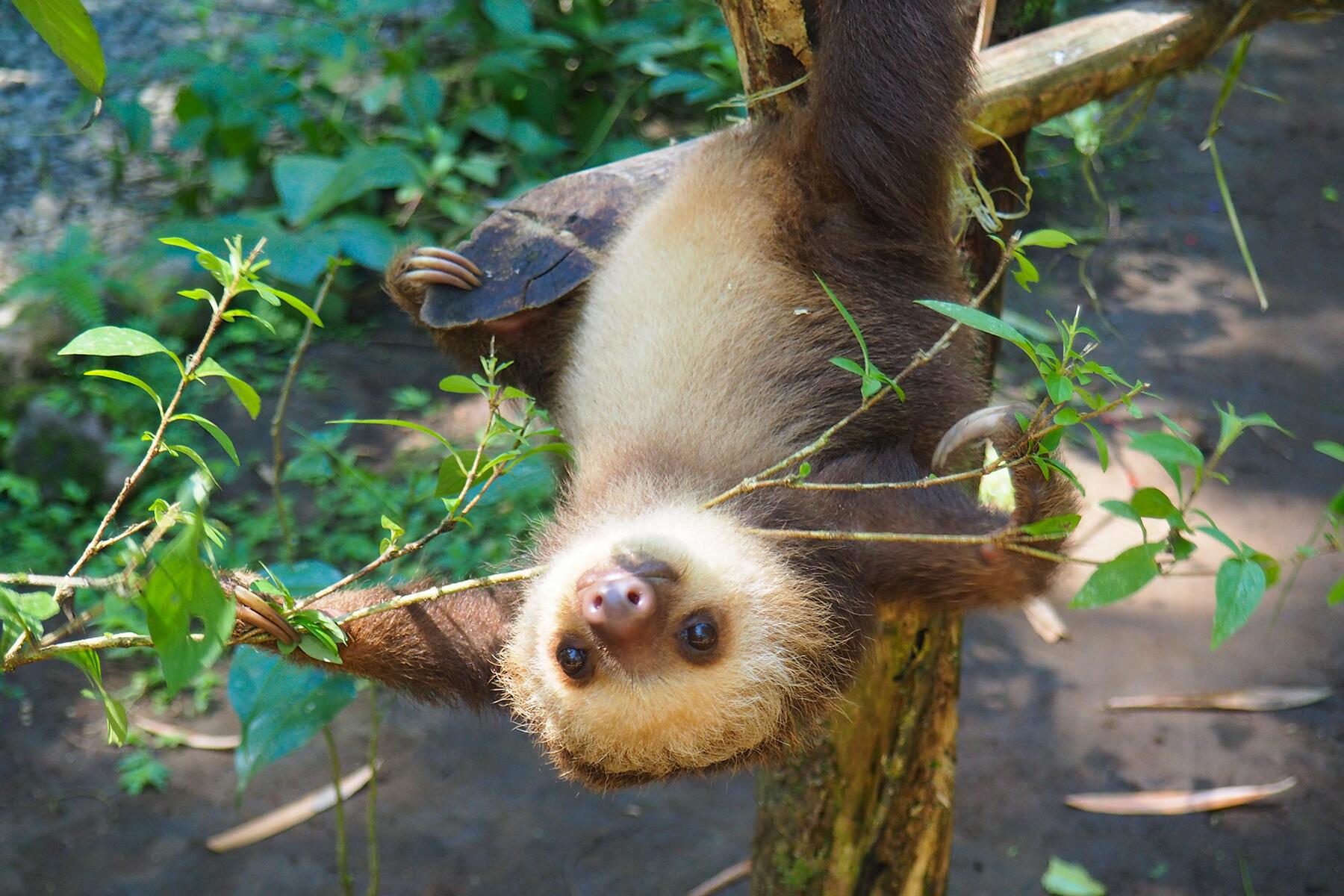
Photo: Kristel Segeren/Shutterstock
iv OF 12
Sloths
These sluggish, permanently smile creatures are adorable at any historic period, but a baby sloth clutching onto its mama as she gradually maneuvers through the copse is plenty to make anyone'south heart cook. Mayhap their charm comes from the fact that they are the slowest animals on World, so if y'all're lucky enough to spot a sloth y'all can actually take time to appreciate its cuteness.
The babe stays with its female parent for most six months, hugging her belly as she maneuvers very… very… slowly… through the tree awning. Although deforestation is posing a threat to their habitats, sloths can exist found in tropical forests throughout Central and South America. Next time you lot're in the region, make sure to keep your eyes up for these smile faces!
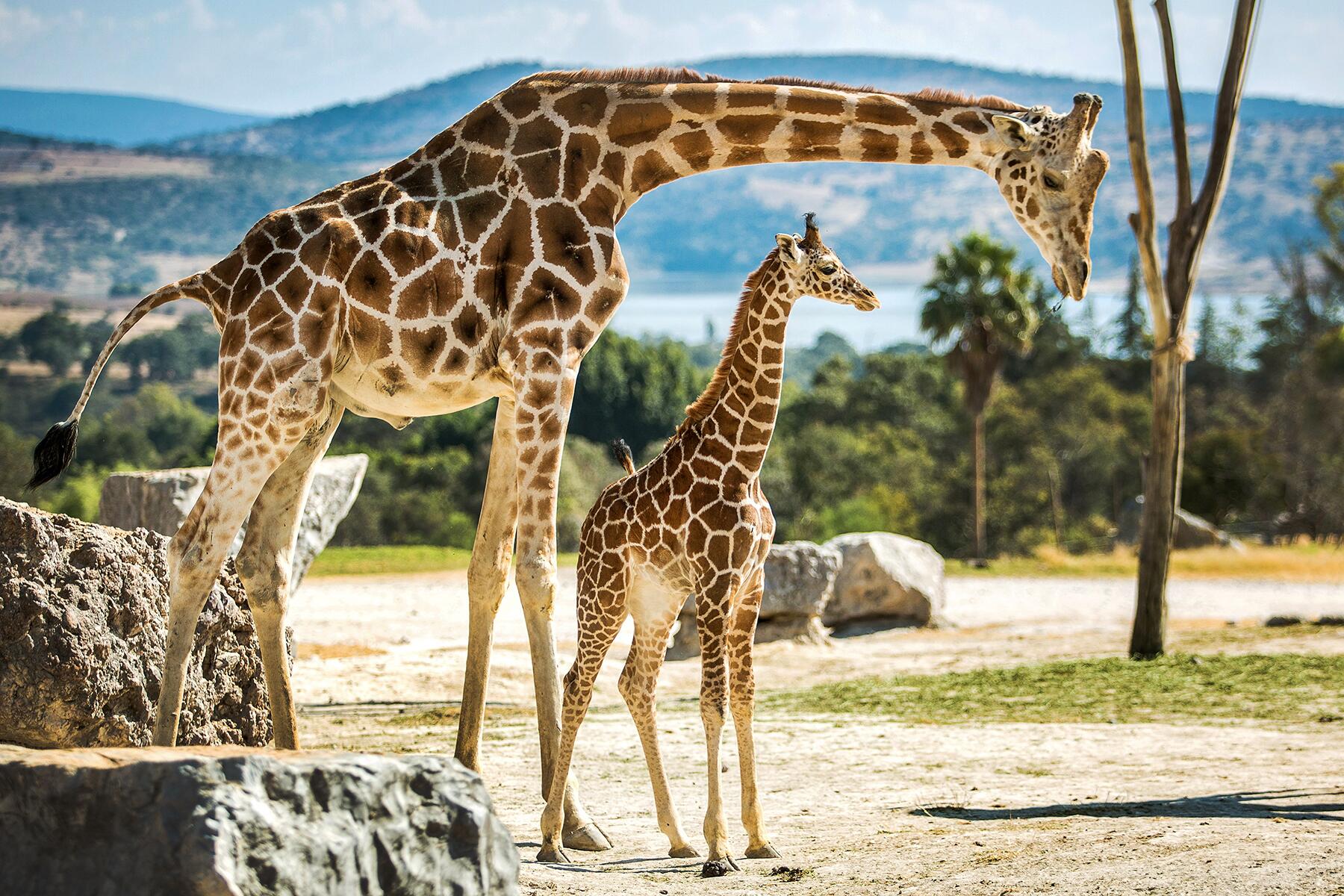
PHOTO: Photo Spirit/Shutterstock
5 OF 12
Giraffes
Though they grow upwardly to be the almost elegant and graceful surveyors of the savanna, in their babyhood, giraffes are but getting the hang of things. Watching a baby giraffe testing out its lanky limbs while it mimics its mother is an adorable and endearing process. As they abound into their ears and legs, baby giraffes already rep the signature patterns that brand these animals stand out amongst their African peers.
Sadly, many of the giraffe's 9 subspecies are in a vulnerable country due to poaching and humans encroaching on their homeland, with the Masai and reticulated giraffes classified as endangered and the Nubian and Kordofan giraffes critically endangered. Efforts to relieve this beautiful species include supporting sustainable land practices and anti-poaching initiatives. So assist where you can, and on your next safari, capeesh these niggling cuties a little extra from afar!
INSIDER TIP These herbivores are not aggressive towards humans, then i of the best ways to experience them is by getting a close-upwardly look on a walking safari.
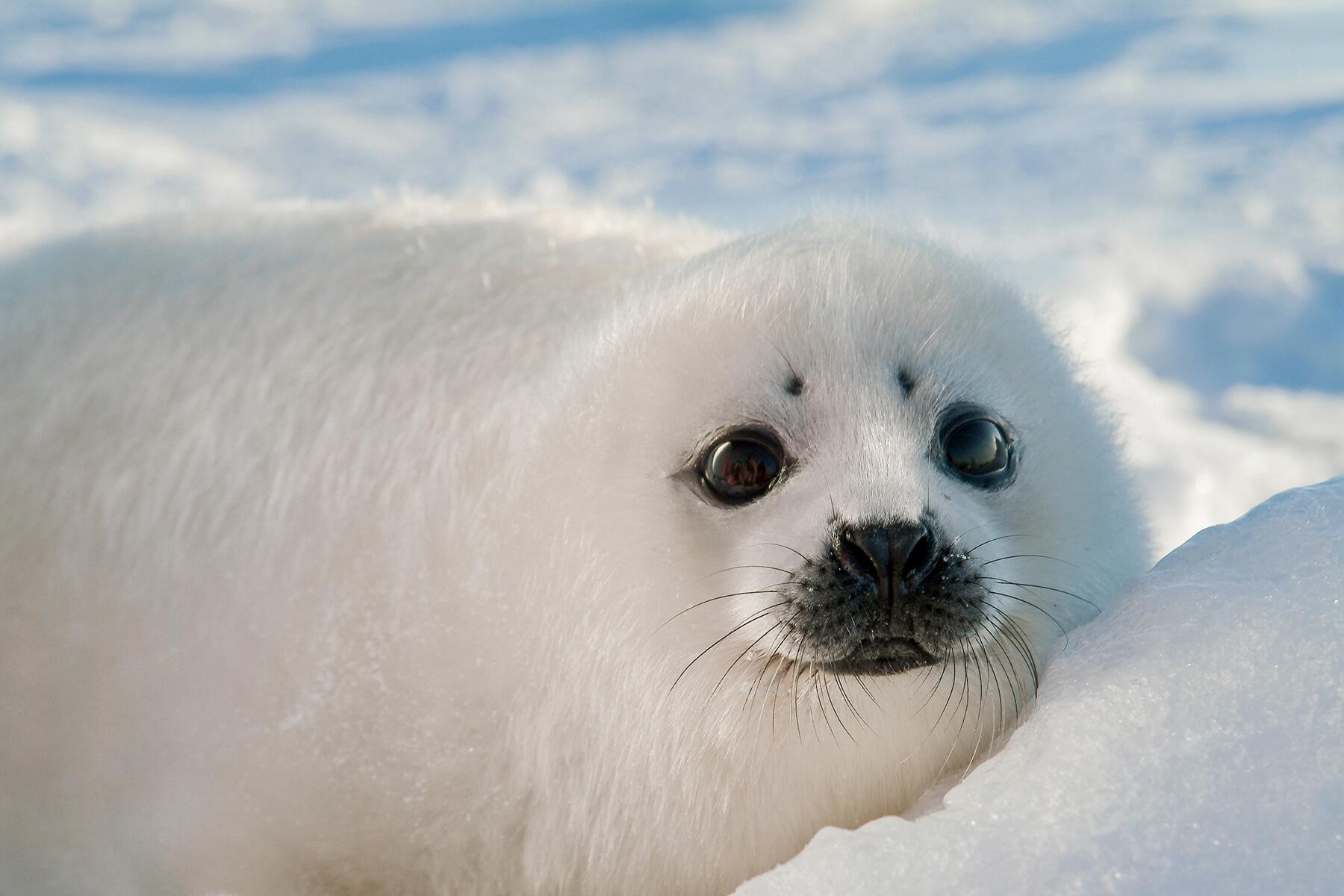
PHOTO: FloridaStock/Shutterstock
6 OF 12
Seals
Baby seals are some of the cutest animals on the planet due to their doe optics, whiskered cheeks, floppy bodies, and inquisitive personalities.
If you want to encounter them in action underwater, snorkel with the Cape Fur Seals, known every bit the "dogs of the sea," in South Africa's Hout Bay or Plettenberg Bay. These playful underwater acrobats are as spunky equally they are curious.
For the ultimate dose of cuteness, yous've got to go for something fluffy: Harp Seals are covered in white fur and found on the ice or the cold waters of the North Atlantic and Chill Oceans. Their white coats plow to lite gray in adulthood, so their optimal cute level is definitely while they're young.
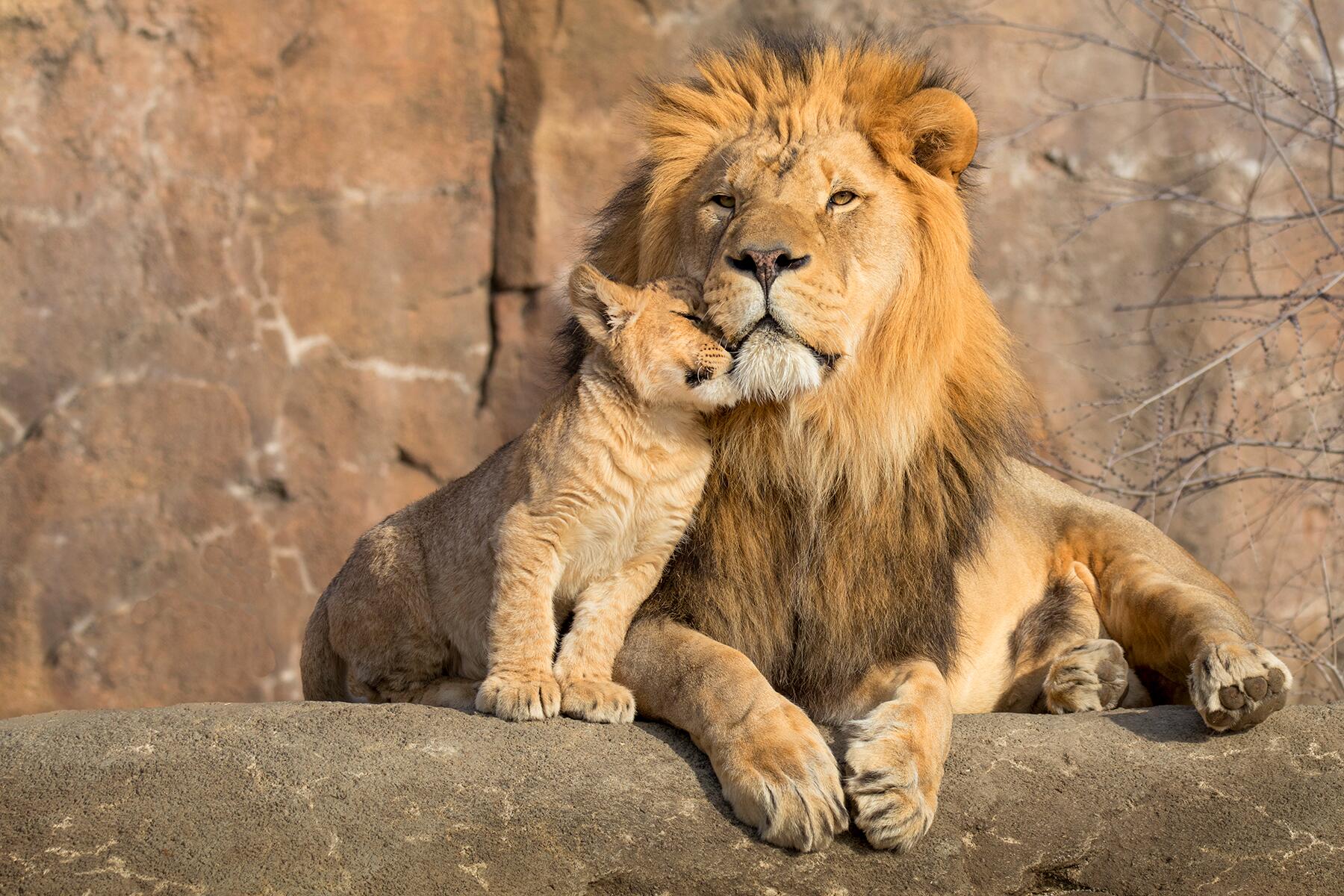
PHOTO: Ricardo Reitmeyer/Shutterstock
7 OF 12
Lions
For many of the states, Disney was the perpetual theme of our childhood, and The Lion King is the ultimate source of baby animal inspiration. Seeing a pride of baby Simbas or Nalas in real life is certain to deliver a warm and fuzzy wave of nostalgia.
The lion's innate disposition as the Male monarch of Pride Rock—also known equally the acme predator on the savanna—means that the mischievous little cubs are already coming into their ferocious selves, and it is adorable to watch. Cute, fuzzy, and playful, the infant lions are slowly perfecting their manus-eye coordination and rumbling roar until they get dominant hunters like their parents.

Photograph: Damian Lugowski/Shutterstock
8 OF 12
Quokkas
Another animal that wears a constant smile and inflicts happiness onto all that cross its path is the quokka. Native to Western Australia with their largest population on Rottnest Isle, these marsupials have been dubbed the "World's Happiest Beast." Their immature, or joeys, stay tucked into their pouch until they're old enough to take on the earth at around 6 months, and that smiling picayune face peeking out of the pouch is pure joy.
Sad simply potentially evolutionary fact: Quokka mothers are known to sacrifice their babies if they are feeling threatened by a predator, prompting some claims that they "toss their babies at predators." While this certainly seems like poor motherhood to us humans, studies evidence that the mother is a proven breeder while the infant may be infertile, and so it may be a tactic of evolutionary preservation for the species.
Either style, they are adorable and we are rooting for them, and so let's just have a infinitesimal to grinning at that smile.
INSIDER TIP Information technology's forbidden to pet or feed quokkas, so take your selfies from afar and let them practice any approaching.
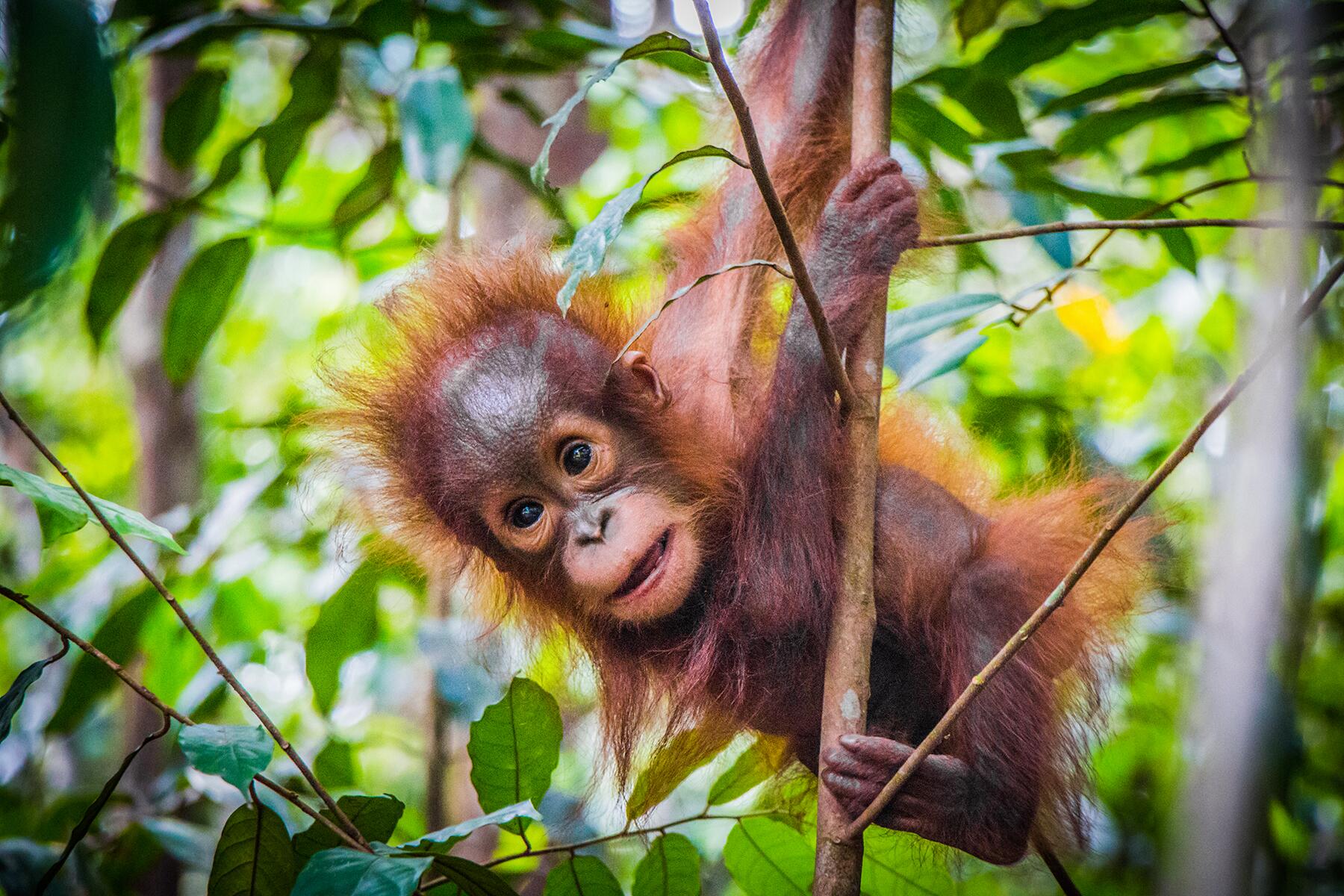
Photo: Alex East/Shutterstock
9 OF 12
Orangutans
"Orangutan" literally translates equally "person of the woods," and it makes sense—we share almost 97% of the same Deoxyribonucleic acid. Baby orangutans are hilariously humanlike, sticking past their mamas as they swing beyond branches and dine on their vegan surroundings. They take the ability to remember, reason, and bear witness emotion, and so similar ourselves, the babies volition whimper when hungry or smile at their loving mama. How relatable is that?!
Unfortunately, these scruffy red apes are endangered and proceed to face threats due to deforestation for palm oil plantations, logging, and poaching. Visit them at Sepilok Orangutan Rehabilitation Centre in Borneo or Frankfurt Zoological Society's Orangutan Rehabilitation Center in Sumatra, or effort your hand at spotting them in the wild in the forests of these ii islands.
INSIDER TIP The optimal times to view orangutans at Sepilok are during their feedings at ten a.m. and 3 p.m.—they can't resist mealtime.
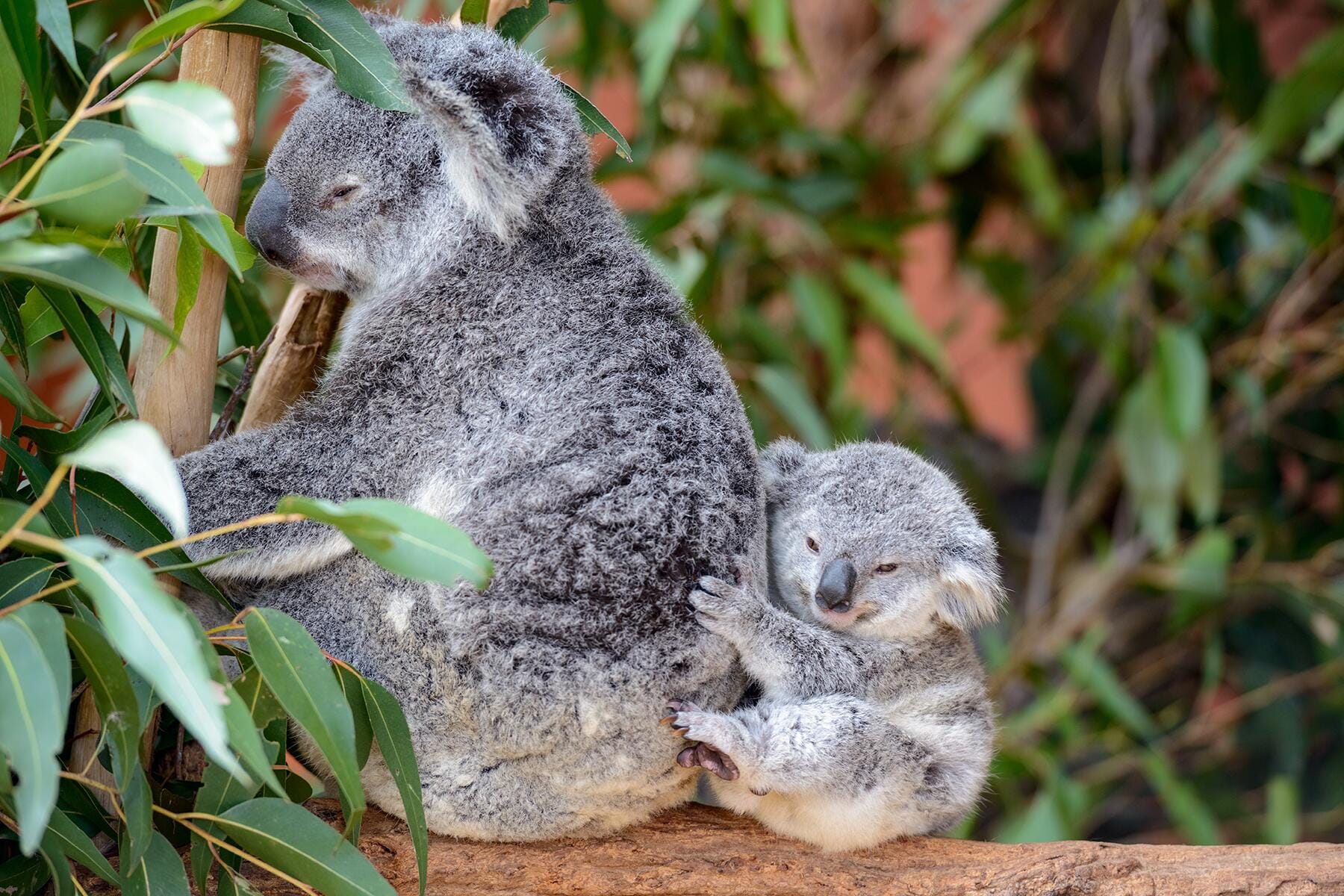
Photograph: Andrii Slonchak/Shutterstock
10 OF 12
Koalas
Koalas dear to cuddle both each other and tree branches, and their fuzzy bodies, round ears, and button noses make u.s. want to snuggle them right back. The joey lives in its female parent's pouch until around six months of age, fully coming into its cuteness when it ventures out into the world via its female parent's dorsum. From hither, koalas tin can be found munching on eucalyptus leaves or sleeping, which they do upwardly to 22 hours per day.
Australia's national treasure, koalas tin be spotted in the wild by chance, merely the nigh reliable places to see these cuties include Koala Conservation Center outside of Melbourne, Koala Park Sanctuary by Sydney, or Alone Pine Koala Sanctuary about Brisbane. If you can't resist the caress, please practise your inquiry to ensure that you are supporting a reputable and sustainable center.
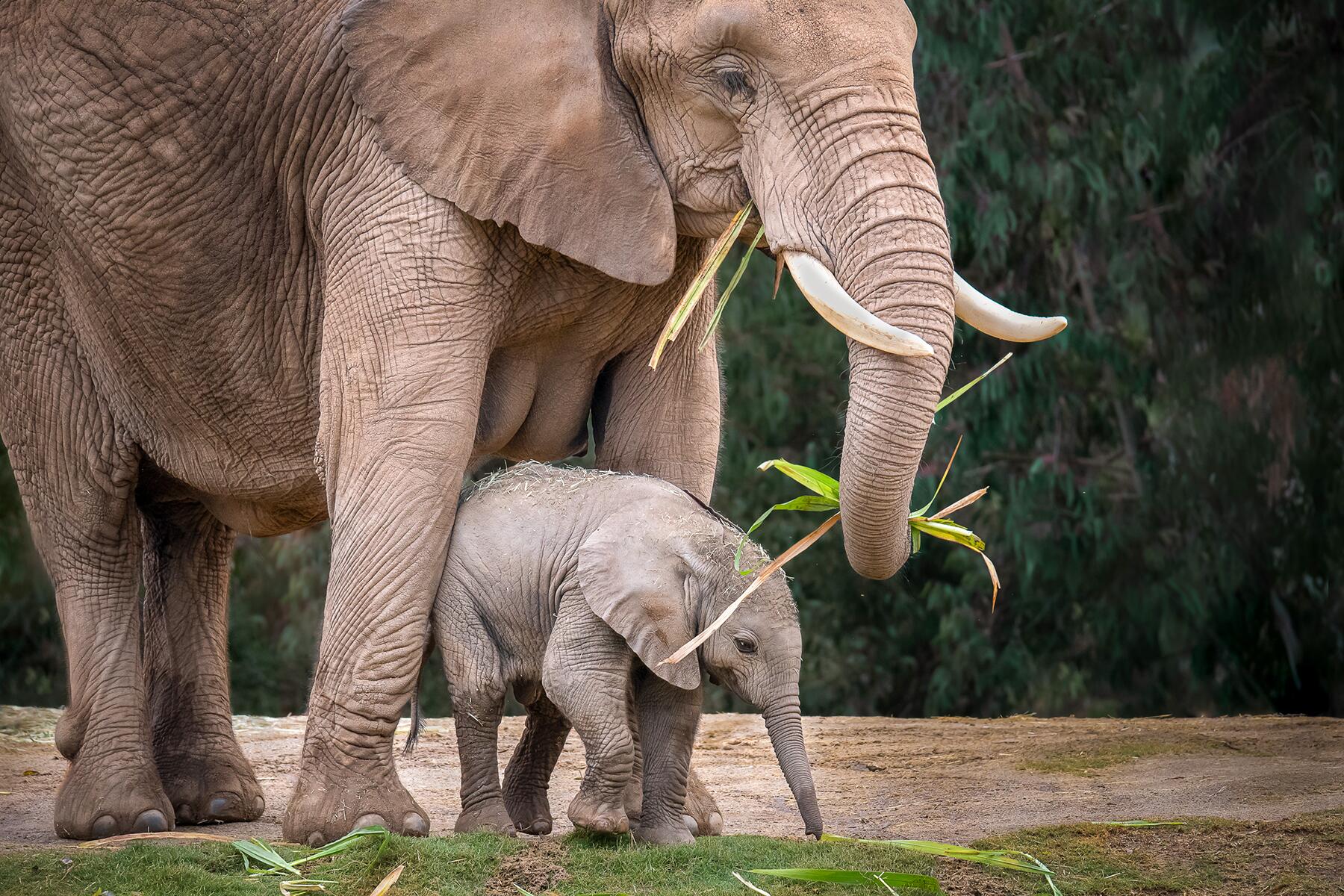
PHOTO: Aliioss xeii/Shutterstock
eleven OF 12
Elephants
Baby elephants are curious and impuissant, with big, floppy, fan-shaped ears. They tin be establish scurrying, stumbling, and skipping amid their female parent'due south legs equally they meander from h2o hole to h2o hole.
Just every bit human babies go extremely fascinated when they find a new body part, infant elephants put in some serious work to go the hang of their trunks, moving them about every bit they swing, classy, step, and fifty-fifty suck on them.
Elephants can be establish across Africa and Asia, with African elephants existence larger than their Asian counterparts. An iconic member of the Big Five, they are a must-meet on your African safari!
INSIDER TIP If you come up across a baby elephant on a self-bulldoze safari, maintain an extra safe altitude because the mama volition not be happy if you go too close.
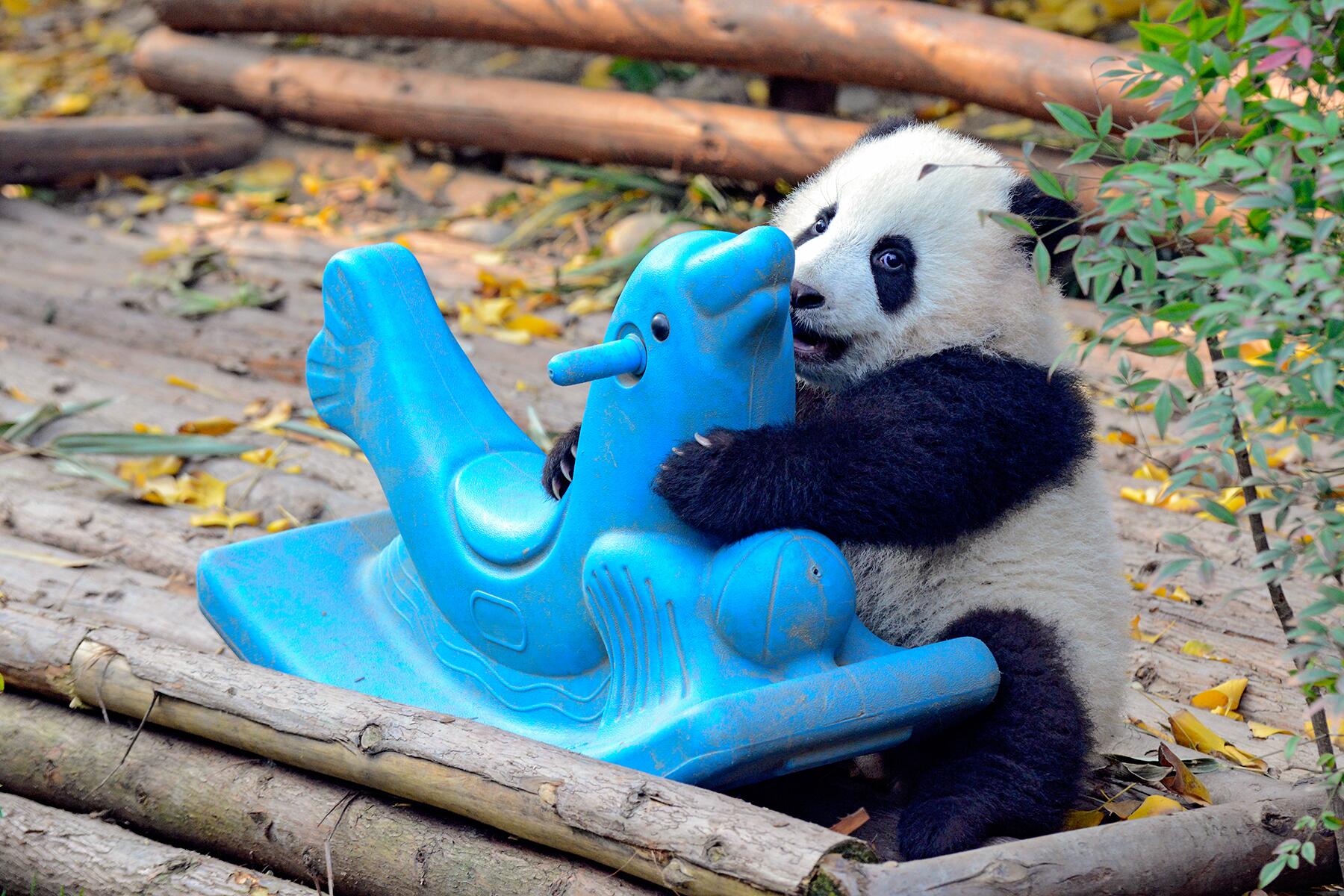
Photograph: robert cicchetti/Shutterstock
12 OF 12
Pandas
A panda comport has got to be the closest thing to a living, animate stuffed beast. These cuddly creatures are native to Mainland china and can exist seen in the wild (if fortune is on your side) in the remote mountainous regions of the Sichuan Province, or conservation centers such equally Giant Panda Breeding Inquiry Base of operations or National Bifengxia Panda Reserve. Their black heart patches, squishy fluffy bodies, and curious and playful natures make them an admittedly adorable animal.
Baby pandas are incredibly tiny, measuring 0.2 pounds and ane/900th the size of their mothers at birth. They offset to become their signature black and white coats around three weeks, and this is when their cuteness really starts to set in. Effectually six months, they will exist munching on bamboo, playing with their mothers, and tumbling about similar a fluffy toddler and you won't exist able to contain yourself.
NEWSLETTER SIGN UP
![]()
STAY UPDATED

![]()
I want emails from Fodor's Travel with travel information and promotions. I tin unsubscribe whatsoever time using the unsubscribe link at the stop of all emails.

Look out for our newsletters with travel tips and special offers.
Source: https://www.fodors.com/news/photos/the-cutest-baby-animals-in-the-world
0 Response to "Cute Baby Animals in the Wild That Are Very Very Very Very Very Very"
Post a Comment